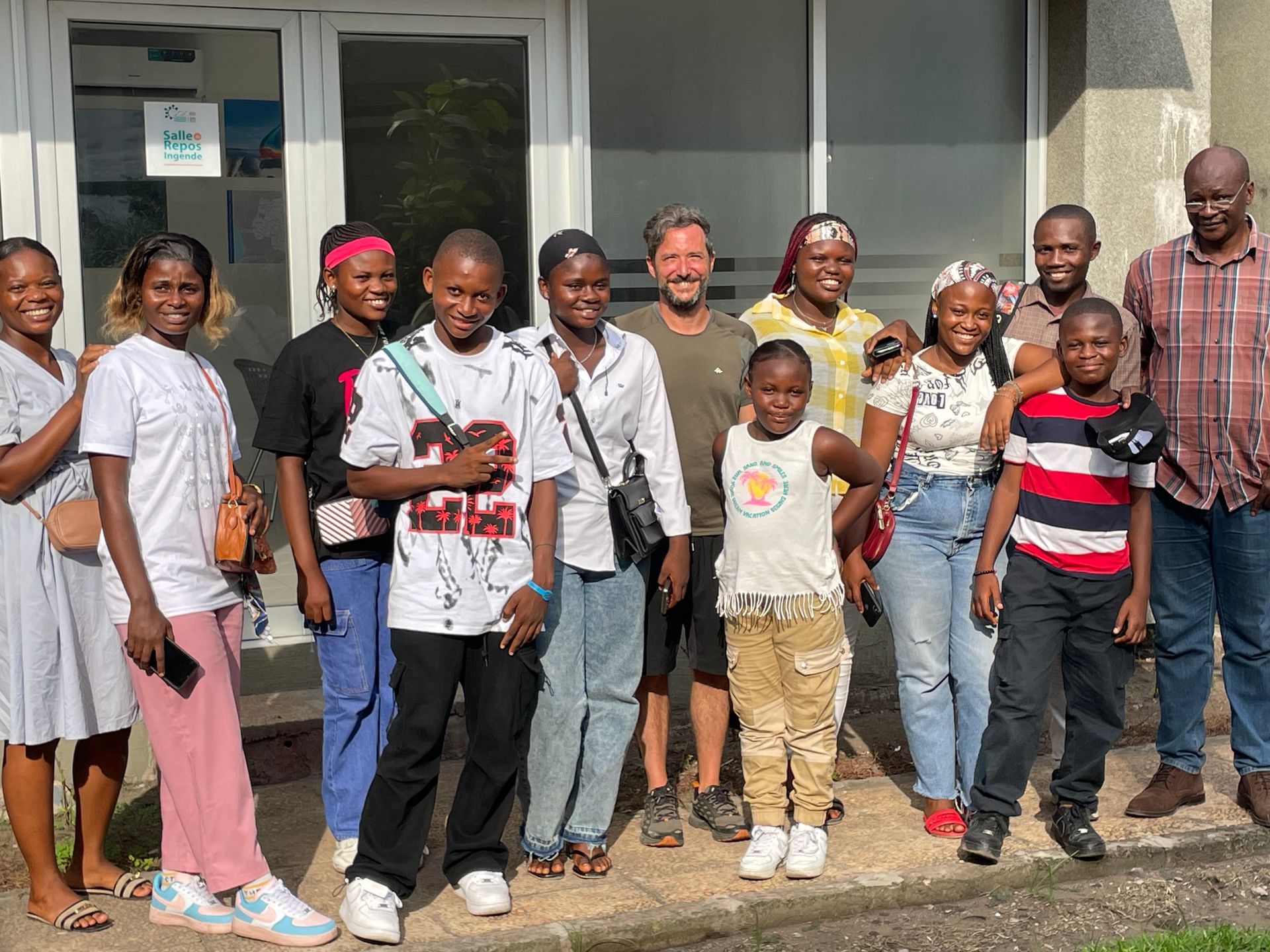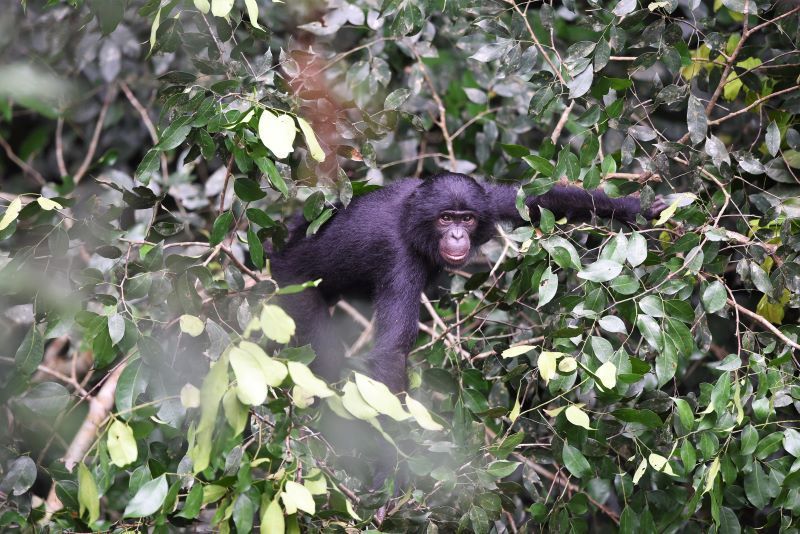Two decades of bonobo protection in LuiKotale

Zwei Jahrzehnte Bonobo-Schutz in LuiKotale
Weltweit sind Wildtiere gefährdet und die Hochrechnungen von Naturschutzbehörden können alarmierender nicht sein. Besonders groß ist die Gefahr für Arten, die eine langsame Entwicklung durchmachen. Dazu gehören Elefanten, Wale und alle Menschenaffen. Intensive Bejagung und der fortschreitende Verlust intakter Lebensräume erzeugen eine gefährliche Mixtur, die den Fortbestand der meisten Arten bedroht.
Orang-Utans überleben inzwischen nur noch in wenigen, kleinräumigen Refugien und den afrikanischen Menschenaffen ergeht es kaum anders. Wo und wie viele Bonobos im Kongobecken heute noch leben ist nicht bekannt und die kursierenden Bestandszahlen sind Anlass für düstere Prognosen.
Im Wald von LuiKotale ticken die Uhren etwas anders. Seit dem Beginn der Feldstudien im Jahr 2002 beobachten Forscher und Naturschützer die Mitglieder der Bompussagruppe, benannt nach einem Urwaldfluss im Osten ihres Streifgebietes. Neben der Forschung ist der Erhalt des natürlichen Lebensraumes mit seiner artenreichen Tier- und Pflanzenwelt ein vordringliches Anliegen. Innerhalb von zwanzig Jahren hat sich die Größe der Studiengruppe verdoppelt. Verursacht wird der ungewöhnliche Bevölkerungszuwachs durch konstante Geburtenzahlen, geringe Sterblichkeit und die steigende Zahl fortpflanzungsfähiger Weibchen. Die biologischen Ursachen für die positive Entwicklung sind derzeit noch unklar. Eine mögliche Erklärung ist, dass zu Beginn der Forschungen vor 20 Jahren die Gruppe durch Jagd stark dezimiert war und sich nach und nach davon erholt. Eine weitere Möglichkeit ist, dass die Gruppengröße zunimmt weil vermehrt junge Weibchen aus entlegenen Gebieten mit hohem Jagddruck zuwandern. Auch kann nicht ausgeschlossen werden, dass Gruppen, die an Menschen gewöhnt sind, benachbarte Gruppen verdrängen und sich so neue Nahrungsgründe erschließen. In Folge der besseren Ernährung könnte die Sterberate ab- und die Geburtenrate zunehmen. Was das Anwachsen der Bonobopopulation im Wald von LuiKotale in jedem Fall zeigt, ist, dass die ständige Anwesenheit von Menschen, die sich tagtäglich an Ort und Stelle für den Erhalt des Lebensraumes und die Sicherheit von Wildtieren einsetzen, eine wirksame Methode ist, dem Artensterben zu begegnen.
Two decades of bonobo protection in LuiKotale
The decline of wild animal populations and the threat of extinction are global issues and current predictions of conservation organizations could not be more alarming. Species that experience a slow development and slow rate of reproduction are at particular risk. This cohort includes elephants, whales and apes. Intensive hunting and the progressive loss of intact habitats create a dangerous mixture that threatens the survival of most species. Today, orangutans survive only in a few forest refuges and the situation for African great apes is not very different. How many bonobos still live in the Congo Basin is unknown, and wherever numbers are mentioned, they give no reason for optimism. In the forest of LuiKotale the clock seems to tick a bit different. Since the beginning of field studies in 2002, researchers and conservationists follow wild bonobo daily and by doing so, protect them from hunting. At the same time, their presence helps preserving the natural habitat, its diverse flora and fauna. Since 2002, the size of the Bompussa community (see video), named after a small forest stream in the East of the community range, has doubled. This unusual population growth can be caused by different factors such as a constant birth rates, low mortality and the increasing number of reproductive females. While the causal reasons for the positive development remain to be explored one reasonable explanation is that at the beginning of field work, hunting had reduced group size and what is seen now reflects a gradually recovery. Another possibility is that the group size increases because more young females migrate from remote areas with high hunting pressure. Moreover, a group that is consistently accompanied by humans may displace neighbors and by doing so, acquire new food sources. As a result of improved nutrition, mortality rates may decrease and/or birth rates increase. Whatever the reason may be, the growth of the bonobo population in the LuiKotale forest indicates that the permanent presence of people and the related effort to protect natural habitat and the safety of wild animals, is an effective approach to counter the ongoing loss of
Neuer Text























